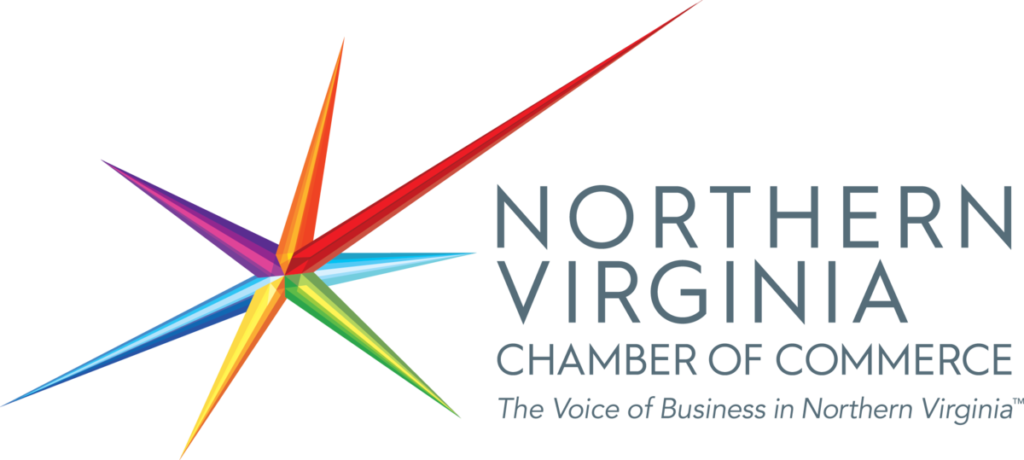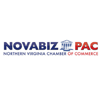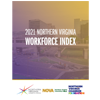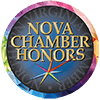Strategic Plan
What we do and where we're headed.Our Core Purpose:
Advance business growth in Northern Virginia.
Core Ideology describes an organization's consistent identity that transcends all changes related to its relevant environment. Core ideology consists of two elements: the Core Purpose – the organization's reason for being – and Core Values – essential and enduring principles that guide an organization's behavior.
Core Purpose (Mission): Advance business growth in Northern Virginia.
Core Values: Leadership, Growth, Equity, Integrity, Community
Chamber MEMBERSHIP
Membership Pricing
Our flat-rate membership dues ensure that all of your employees can enjoy Chamber benefits.
Membership Application
Ready to join? Complete our application to start your Chamber membership.
Long-Term Envisioned Future (10+ Years)
The envisioned future conveys a concrete yet unrealized future for the organization. It consists of a vision– a clear and compelling catalyst that serves as a focal point for effort and a vivid description, a vibrant and engaging description of what it will be like to achieve the vision.
Vision Statement
Indispensable to the vitality of Northern Virginia and to business growth.
Vivid Description of the Desired Future
The Northern Virginia Chamber convenes the business community to solve problems and accelerate growth. The Chamber and its members are at-the-table when crucial decisions impacting Northern Virginia and the Commonwealth are made. The Chamber includes all sectors of the region's business community, non-profit organizations, as well as businesses headquartered outside of the region.
The Chamber is recognized as a regional leader advocating for and contributing to equity solutions including providing resources to its members and regional stakeholders. The Chamber attracts a diverse membership and promotes gender and racial equity and BIPOC- and women-led businesses.
The Chamber drives workforce and economic development solutions including its annual sought-after Workforce Index, which informs regional stakeholders and the Chamber's NoVA Chamber Strategic Plan advocacy and programs. Through its workforce development roadmap, the Chamber orchestrates ties among academia, training programs, and businesses throughout the region, resulting in a robust workforce.
The Northern Virginia Chamber is recognized as adding significant value to our members and key stakeholders in building a resilient and expanding economy.
Goals and Objectives (3 to 5-year horizon)
Goals represent outcome-oriented statements intended to guide and measure the organization's future success. The achievement of each goal will move the organization towards the realization of its "Envisioned Future." Supporting objectives further clarify direction and describe what the enterprise wants to have happen; in other words, a descriptive statement of what constitutes success.Goal #1: Regional Leadership
The NoVA Chamber is the leadership forum to develop strategic and actionable solutions for businesses in the Northern Virginia region.
Objectives:
1. Increase Chamber involvement by diverse business, academic and government executives in critical business issues.
2. Increase alignment of the Chamber’s services to meet our members needs for business growth.
3. Enhance recognition of Chamber successes.
4. Ensure the diversity of members – industry and leadership – reflects the region’s diversity.
Goal Metrics: Expected Results (Metric)
- Grow membership revenue.
- Increase members by business segment.
- Measure member sentiment.
Goal #2: Diversity, Equity, & Inclusion
The NoVA Chamber is recognized as a champion of DEI such that member companies and the business community reflect the diversity of the region.
Objectives:
1. Increase value to BIPOC and women-owned and led businesses.
2. Increase the diversity of the Chamber's leadership board.
3. Enhance the Chamber's influence in advocating for and contributing to equity solutions.
4. Increase outreach to diverse groups within the community.
5. Increase coordination of resources to promote equity in the region.
Goal Metrics: Expected Results (Metric)
- Chamber member company roster reflects the diversity of the region.
- Board representation reflects diversity of the region.
- Increasing the number of members engaged in Chamber DEI activities.
Goal #3: Regional Workforce Development
The NoVA Chamber is leading the effort to close the regional talent gap.
Objectives:
1. Increase understanding of the workforce needs and solutions within the region.
2. Advance strategic collaboration to meet workforce needs.
3. Define and develop key strategic resources.
4. Maintain focus on the region's workforce issues as a top policy/advocacy priority.
5. Additional workforce staff resources.
Goal Metrics: Expected Results (Metric)
- The Chamber is perceived as a leader in closing the regional talent gap.
- Measuring annual number of companies engaging in our workplace activities/meetings/networks.
- Measuring the number of partnerships resulting from this work.
Appendix A
Key Drivers (created: January 2021)
To make progress toward an envisioned future, an organization must continuously anticipate the strategic factors or key drivers likely to affect its ability to succeed and assess those factors' implications. This process of building foresight about the future will help NoVA Chamber constantly recalibrate its view of the relevant future, a basis upon which to update the plan.
1. Future workforce challenges and shortages (i.e., talent pipeline, affordable housing, quality of life, etc.)
2. The growth of virtual events, communication, and interaction
3. The importance of responding to diversity, equity, and inclusion, and Social justice issues
4. The need for unified regional business leadership
5. The need advocate for the entire business community
6. Pandemic recovery
7. The growth of business intelligence
8. The need to engage emerging/future leaders in the Chamber
9. Economic recovery
10. Preparing for future pandemics
11. The need to be involved in influencing Federal, state, and local government
12. Continued changes to the business environment
13. Expanding beyond government contracting
14. Changes in workplace settings
